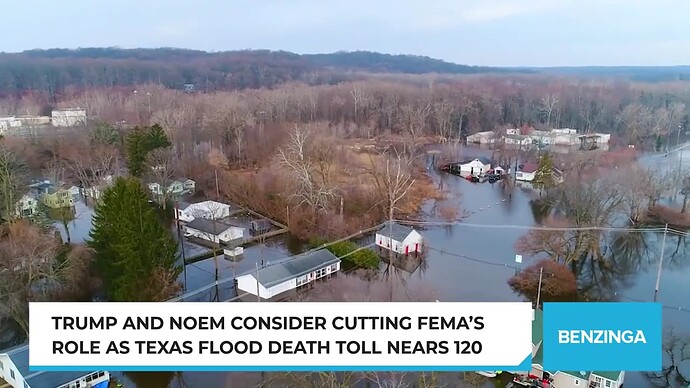KERRVILLE, Texas — President Donald Trump arrived Friday in Texas for a firsthand look at the devastation from the state’s catastrophic flooding, but he remained conspicuously quiet about his previous promises to do away with the federal agency in charge of disaster relief.
The Trump administration isn’t backing away from its pledges to shutter the Federal Emergency Management Agency and return disaster response to the states. But since the July 4 disaster, which killed at least 120 people and left more than 170 missing, the president focused on the once-in-a-lifetime nature of what occurred and the human tragedy rather than the government-slashing crusade that’s been popular with Trump’s core supporters.
“It’s a horrible thing,” Trump told reporters as he left the White House. He approved Texas’ request to extend the major disaster declaration beyond Kerr County to eight additional counties, making them eligible for direct financial assistance to recover and rebuild.
People are also reading…
- The Roanoke Times 2025 All-Timesland Golf Team
- Blue Ridge Parkway communities summit in Roanoke
- Former executive at Western Virginia pain clinics sentenced to 3 years in prison
- Ex-Carilion doctor’s license suspended indefinitely for sexual comments
President Donald Trump, right, and first lady Melania Trump arrive Friday at Kelly Field air base in San Antonio, Texas, en route to observe flood damage in Kerrville, Texas.
Trump’s shift in focus underscores how tragedy can complicate political calculations, even though he made slashing the federal workforce and dramatically shrinking the size of government centerpieces of his administration’s opening months.
The first couple were scheduled to tour some of the hard-hit areas by air, then visit the state emergency operations center in Kerrville to meet with first responders and relatives of flood victims.
“This area is primarily pro-Trump,” said Harris Currie, a rancher from Utopia, Texas, near Kerrville, who said having the president visiting boosts morale. “It’s the country, and that’s what got him elected. Do they expect it? No. Is it uplifting? Absolutely.”
Trump won Kerr County with 77% of the vote last year, and Currie said his visit is “something a president should do.”
The president got a briefing from officials in Kerrville, where he was joined by Republican Gov. Greg Abbott and Republican Sens. John Cornyn and Ted Cruz.
Volunteer Chris Griswold unpacks water outside the Salvation Army on Friday in Kerrville, Texas.
Ashley Landis, Associated Press
Kerr County Commissioner Jeff Holt, who also is a volunteer firefighter, said the focus of Trump’s visit should be “how we responded and what we’re going to do in the future.”
“In the future, we’re going to figure out how we get a little better at what we do,” Holt said.
Asked what he might tell Trump officials needed, Holt stressed the need for repairs to nonworking phone towers and “maybe a little better early warning system.”
It’s relatively common for presidents visiting disaster sites to tour the damage by air, a move that can ease the logistical burdens on authorities on the ground.
Trump’s predecessor, President Joe Biden, observed the aftermath of Hurricane Helene in western North Carolina and Hurricane Milton in Florida last fall by air before meeting with disaster response officials and victims on the ground.
From left, first lady Melania Trump, Texas Gov. Greg Abbott and President Donald Trump are briefed on flood damage Friday in Kerrville, Texas.
Jacquelyn Martin, Associated Press
Trump used past disaster response efforts to launch political attacks. While still a candidate trying to win back the presidency, Trump made his own visit to North Carolina after Helene last year and accused the Biden administration of blocking disaster aid to victims in Republican-heavy areas.
Trump promised repeatedly — and as recently as last month — to begin “phasing out” FEMA and bring disaster response management “down to the state level.”
During a Tuesday Cabinet meeting, Trump didn’t mention those plans and instead praised the federal flooding response.
Pressed this week on whether the White House will continue to work to shutter FEMA, press secretary Karoline Leavitt wouldn’t say.
“The president wants to ensure American citizens always have what they need during times of need,” Leavitt said. “Whether that assistance comes from states or the federal government, that is a policy discussion that will continue.”
Russell Vought, director of the Office of Management and Budget, similarly dodged questions Friday about FEMA’s future, instead noting that the agency has billions of dollars in reserves “to continue to pay for necessary expenses” and that the president has promised Texas, “Anything it needs, it will get.”
“We also want FEMA to be reformed,” Vought added. “The president is going to continue to be asking tough questions of all of us agencies, no different than any other opportunity to have better government.”
